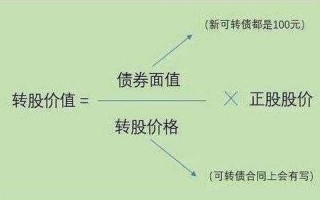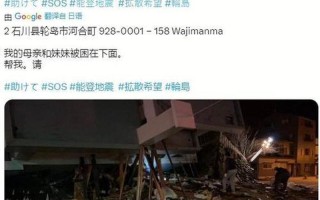翟志刚的资料(翟志刚的资料简介叶光富)
今天小编辑给各位分享翟志刚的资料的知识,其中也会对翟志刚的资料简介叶光富分析解答,如果能解决你想了解的问题,关注本站哦。
翟志刚的简介
翟志刚,男,1966年10月出生于黑龙江省齐齐哈尔市龙江县,大学文化、双学士学位。1985年6月入伍,1989年毕业于空军第三飞行学院,曾任空军航空兵某师战斗机飞行员,飞过歼七、歼八等机种,安全飞行950小时,被评为空军一级飞行员。
1998年1月正式成为中国首批航天员,2003年曾入选中国首次载人航天飞行航天员梯队。现为中国人民解放军航天员大队特级航天员。
2008年9月25日至27日的神舟七号飞行任务中,担任飞船指令长,是第一位出舱活动的中国人。2018年1月,被中宣部授予“时代楷模”荣誉称号。
翟志刚曾用撬棍别开舱门
据载人航天工程航天员系统总设计师黄伟芬介绍,航天员的上肢力量可以达到皮划艇和体操国家专业运动员的水平。神舟七号航天员翟志刚曾在出舱时无法打开飞船气压舱的大门,借助一根金属撬棍将舱门别开。
以上内容参考?百度百科-翟志刚
翟志刚的详细资料
翟志刚,男,1966年10月10日出生于黑龙江省齐齐哈尔市龙江县,1985年6月入伍,1989年毕业于空军第三飞行学院,曾任空军航空兵某师战斗机飞行员,1998年1月正式成为中国首批航天员,2003年9月成为中国载人航天首飞梯队航天员。现为中国人民解放军航天员大队二级航天员,副军职,少将军衔,2005年入选“神舟六号”航天载人飞行乘组梯队成员。翟志刚是神舟七号飞船三名正选航天员之一,他的队友还有刘伯明和景海鹏。他于2008年9月25日在甘肃酒泉随“神七”发射升空,并在9月27日作太空漫步,成为第一位进行太空漫步的中国航天员。
作家翟志刚的资料
翟志刚,黑龙江省齐齐哈尔市龙江县龙江镇龙西村人,大学文化、双学士学位。1966年10月10日出生,1984年加入中国共产主义青年团,1985年6月入伍,1991年9月入党,现为中国人民解放军航天员大队二级航天员,副师职,大校军衔。
曾任空军试训中心某团飞行教员,飞过歼七、歼八等机型,安全飞行950小时,为空军一级飞行员。1998年1月正式成为我国首批航天员。经过多年的航天员训练,完成了基础理论、航天环境适应性、专业技术等8大类几十个科目的训练任务,以优异的成绩通过航天员专业技术综合考核。曾入选我国首次载人航天飞行航天员梯队。2005年6月,入选“神舟”六号航天载人飞行乘组梯队成员。2008年6月,入选“神舟”七号载人飞行乘组。
北京时间2008年9月27日16点43分24秒,神舟七号航天员翟志刚开始出舱,16点45分17秒,翟志刚在太空迈出第一步,16点59分,结束太空行走,返回轨道舱。北京时间2008年9月28日,成功返回地球。
翟志刚简介个人资料
2008年,宇航员翟志刚执行太空行走任务时,擅自修改任务顺序,谁知,事后他却说,这样做时,他已做好牺牲的准备。
翟志刚被称为“中国太空漫步第一人”。2008年,他在神舟七号飞行任务中,圆满完成了中国首次空间出舱的任务,也是第一位出舱活动的中国人。
1965年,苏联的航天员列昂诺夫就开始了太空行走,同年6月,美国航天员怀特也实现了出舱行走。
彼时至今,已经43年过去,掌握太空行走技术的国家数量却一直没有发生变化。
那时,我国的航天技术比较落后,毕竟,新中国成立后,中国人对太空的科学探索才真正开始。
1996年,我国选拔了首批航天员。当时的空军一级飞行员翟志刚,通过层层选拔,与杨利伟、景海鹏等14人一起成为我国第一批航天员。
2003年10月15日,杨利伟乘坐神舟五号飞船首次成功进入太空,我国的出舱计划正式开始推进。
而神舟五号六号飞天,翟志刚则作为飞天梯队的备份航天员,两次进入问天阁候命。
虽然这两次翟志刚无缘飞天,但他时刻准备着。他每次训练都给自己加码,超额完成训练强度,以应变各种预想的意外。
十年磨一剑。
终于,2007年,翟志刚正式入选神舟7号飞天梯队,担任航天指令员。
9月27日,翟志刚在刘伯明、景海鹏的配合帮助下,开始执行出舱任务。
历时20小时,他们终于组装完成舱外航天服,准备就绪后,却意外发现,舱门拉不开了。
连续试了三次,都没能拉开舱门,而且,如果再不出舱,飞船就要离开测控区,要是这样,中国航天人的太空行走梦就又遥远了一步。
为此他只好和刘伯明拿出撬棍,拼尽全身力气,将舱门撬开了。
然而,就在翟志刚准备出门时,又一意外发生了,舱内突然响起了火灾警报器。
如果飞船发生火灾,那将是致命的灾难。根本没人能来救援。
要知道,美国第一位太空行走的飞行员,就是被大火活活烧死在机舱里的。来不及多想,翟志刚立刻出舱。
按计划,翟志刚出舱的第一任务本是取回试验材料,但考虑到舱内已经发出警报,此行可能有去无回,翟志刚和同事刘伯明立即更改顺序,选择第一时间让五星红旗飘扬在太空之中!
与此同时,翟志刚对着镜头向全世界说道:我已出舱,感觉良好!
因为,当时全世界的焦点都在我国首次执行太空出舱上。
翟志刚知道,他不能露怯,不能给国家丢人。
这次太空行走,翟志刚飞了9165千米,整个出舱活动持续时间25分23秒,空间出舱活动获得成功。
事后,有学生问翟志刚,去太空时,怕不怕死?
翟志刚坦言:“怕呀,但那时候,我的心里只有祖国和任务,这是每一名军人在国家和民族利益面前的本能反应!
这次出舱行走,使得翟志刚成为中国太空行走第一人,更中国成为了世界上第三个实现太空出舱的国家。
时隔13年后,55岁的翟志刚再次从问天阁出发,搭乘神舟13号出征太空,并再一次圆满完成任务胜利归来。
我国航天事业的发展,我国人民“航天梦”的实现,离不开英雄们的贡献。
让我们向航天英雄翟志刚将军致敬!
下面分享相关内容的知识扩展:
2008年9月25日,神舟7号带着翟志刚、刘伯明和景海鹏三人飞上了太空
有关事件,用英文叙述一下,跪求Shenzhou 7
Shenzhou 7 was the third human spaceflight mission of the Chinese space program. The mission, which included the first Chinese extra-vehicular activity (EVA) carried out by crewmembers Zhai Zhigang and Liu Boming, marked the commencement of the second phase of the Chinese government's Project 921.
The Shenzhou spacecraft carrying the three crewmembers was launched 25 September 2008, by a Long March 2F (CZ-2F) rocket which lifted off from the Jiuquan Satellite Launch Center at 21:10 CST. The mission lasted three days, after which the craft landed safely in Siziwang Banner in central Inner Mongolia on 28 September 2008, at 17:37 CST. The Shenzhou 7 EVA made the Chinese space program the third to have conducted an EVA. EVAs had previously been conducted by the space programs of the Soviet Union (later Russia) and the United States.
The crew for Shenzhou 7 was announced on 17 September 2008
Crew:
Commander: Zhai Zhigang
Orbital module astronaut: Liu Boming
Descent module monitor astronaut: Jing Haipeng
Mission highlights
The Long March 2F rocket launched the Shenzhou 7 into an initial elliptical orbit of 200 x 330 kilometres inclined at 42.4 degrees on 25 September 2008. About seven hours later the spacecraft raised its orbit to a more circular orbit of 330 x 336 km. After three days in space, deorbit manoeuvres began on 28 September at 08:48, and the return module landed at 09:37 UTC at coordinates 42°16′41〃N 111°21′18〃E / 42.278°N 111.355°E / 42.278; 111.355.
China has been congratulated by a number of foreign leaders for the successful completion of the mission, which marked a number of developments for China's space program, including several first-time achievements.
The Shenzhou 7 Mission won the 2009 Space Achievement Award from the Space Foundation
China's first three-person mission
Shenzhou 7 was the first Chinese space mission to carry a three-person crew for several days and conduct a full operation. A total of six astronauts were trained, three to conduct the mission and three others to serve as a backup crew.
China's first spacewalk
On 27 September, Zhai Zhigang, wearing a Chinese-developed Feitian space suit, conducted a 22-minute space walk, the first ever for a Chinese astronaut. Zhai slipped out of the orbital module in a head-first position at around 16:43 (0843 GMT) and wandered around the orbital module, retrieved experiment samples and waved the Chinese flag in space. The spacewalk lasted about 20 minutes, with Zhai returning to the orbital module at 17:00. The first space walk was limited in scope: cables were used to tie Zhai to the handrail outside the orbital module, and his moving route was restricted to areas near the exits. Liu Boming, wearing a Russian Orlan-M suit, stayed in the airlock in the orbital module to provide help if necessary. Liu also conducted an EVA, standing up at 08:58 UTC to hand Zhai a flag. The third astronaut, Jing Haipeng remained in the re-entry module to monitor the general situation of the spacecraft. By 09:00 UTC both astronauts were back inside and the hatch was closed. The space walk was broadcast live on Chinese media, and two cameras provided panoramic images.
The Feitian spacesuit is similar to the Orlan-M in shape and volume and are designed for spacewalks of up to seven hours, providing oxygen and allowing for the excretion of bodily waste. According to Chinese media reports, spacesuit materials with such features as fire and radiation resistance were developed by several civilian corporations and national institutes. Each suit was reported to have cost 30 million RMB (about 4.4 million USD). Except for the gloves of the Feitian suit, the space suits were not brought back to earth.
A fire alarm was reported to the control center at the beginning of the EVA, but it was confirmed to be a false alarm.
Solid lubricant experiment
Scientists conducted a solid lubricant exposure experiment during the mission. A piece of equipment the size of a book was installed on the outside wall of the orbital module, and was later retrieved during the space walk, after having been exposed in the space for more than 40 hours. The experiment was aimed to study a lubricant which will be used for space-based moving components in future space facilities.
Release of miniaturized satellite
A miniaturized satellite was released during the mission on 27 September at 19:24, after Zhai returned to the spacecraft. The satellite was a cube about 40 cm (16 in) long, with a mass of 40 kilograms (88 lb); it carried boost devices and two 150-megapixel stereo cameras. The satellite's tasks included testing the mini-satellite technology, observing and monitoring the spacecraft, and testing the tracking and approaching technology used for space rendezvous and docking.
The miniaturized satellite took photos and videos near the spacecraft, then maneuvered to about 100 to 200 kilometres (62 to 120 mi) away from the spacecraft. After the return module separated from the spacecraft and re-entered the atmosphere, the satellite caught up to the orbiting spacecraft using a liquid ammonia engine, then continue to orbit around the spacecraft. The mini-satellite will work for about three months.
Data relay satellite
China launched its first-ever data relay satellite, called Tianlian I, from the Xichang Satellite Launch Center on a Long March-3C carrier rocket on 25 April 2008. The Tianlian I satellite will be used to speed up communication between the Shenzhou 7 spacecraft and the ground stations, and to increase the amount of data that can be transferred to the ground. The Tianlian I satellite alone can cover 50 percent of the orbit of Shenzhou 7—whereas the Yuanwang space tracking ships, along with China's ten ground observation stations, have a coverage of only 12 percent—and thus will increase the total coverage to about 60 percent of the mission.

高分求一片科幻小说,内容是当翟志刚下了神七后的故事,只要三百字就好了
我会一直在线等 要快!!!!!!!!!!!!在9月27日下午4时三十多分到5事左右,我国宇航员翟志刚完成了太空行走。在舱外,他挥动着五星红旗,无比自豪,还从飞船外部取下了太空润滑材料试验装置,交给另一个宇航员拿回舱里。又过了一会儿,翟志刚手把着飞船外部的把手作了很多动作。太空行走,为我国以后在太空建立空间站打下了基础。看着这些情景,我的心里无比的激动,是啊,中国宇航员在飞船上的一小步就是中国人的一大步。
9月28日下午五点多钟,神舟七号飞船的返回舱在我国内蒙古卫星回收场顺利着陆,三名宇航员神采奕奕地从舱内走了出来。至此,神七飞天取得了圆满成功。
翟志刚在太空行走的路程相当于地球上多少米?
帮帮忙呀神七从16时40分打开舱门的到回舱关闭舱门共19分35秒,约合1175秒。神七平均飞行速度是7.81千米/秒。这样算下来出仓期间神七共飞行9176.75千米。







